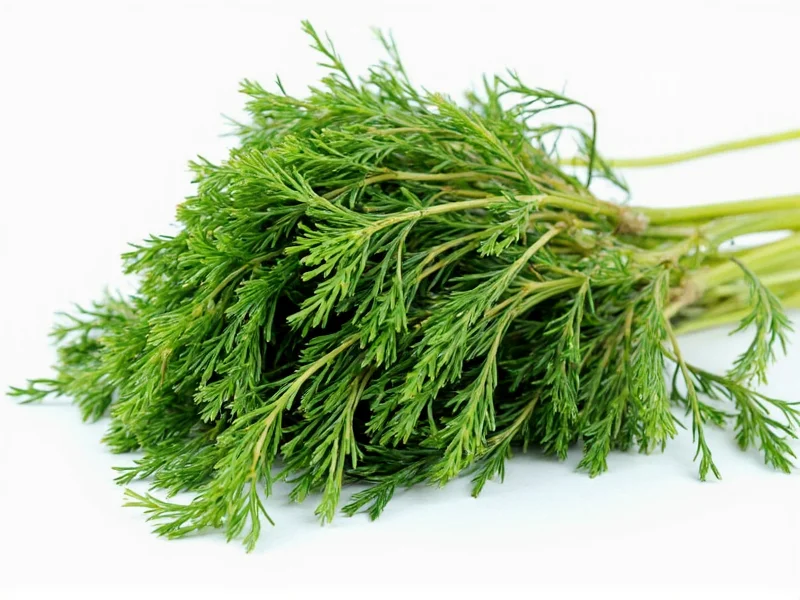Understanding how to properly convert between dried and fresh dill is essential for achieving balanced flavors in your cooking. Many home chefs struggle with herb substitutions, often resulting in dishes that are either bland or overpowering. The key lies in recognizing that dried herbs generally have three times the flavor concentration of their fresh counterparts due to the removal of water content during drying.
Understanding Dill Conversion Ratios
When substituting dried dill for fresh in recipes, precision matters. Dill weed, whether fresh or dried, brings a distinctive tangy, grassy flavor with subtle anise notes to dishes. However, the dehydration process concentrates the essential oils, making dried dill significantly more potent. Getting the conversion wrong can dramatically alter your dish's flavor profile.
| Fresh Dill Amount | Dried Dill Equivalent | Best For |
|---|---|---|
| 1 tablespoon | 1 teaspoon | Sauces, dressings, delicate fish dishes|
| 1/4 cup | 1 tablespoon | Soups, stews, pickling brines|
| 1/2 cup | 1.5 tablespoons | Robust dishes like potato salad or hearty casseroles|
| 1 cup | 3 tablespoons | Pickling recipes or strongly flavored dishes
Flavor Profile Differences
Fresh dill offers a brighter, more delicate flavor with pronounced grassy notes and subtle citrus undertones. Its flavor is more nuanced and dissipates quickly when cooked. Dried dill, by contrast, has a more concentrated, earthy flavor with less of the fresh herb's bright top notes. The drying process diminishes some volatile compounds while concentrating others.
Professional chefs note that dried dill works better in long-cooking dishes where fresh dill would lose its flavor, while fresh dill shines in finishing applications. For cold dishes like salads or dips, fresh dill provides superior flavor complexity that dried dill cannot replicate.
When to Use Each Form
Certain culinary applications call specifically for one form over the other. Understanding these distinctions helps you make better dried dill to fresh substitution decisions in your kitchen:
- Use fresh dill when: Making tzatziki, finishing grilled fish, preparing Scandinavian gravlax, or creating delicate salad dressings where bright herbal notes are essential
- Use dried dill when: Preparing pickles, making spice rubs, cooking soups that simmer for hours, or creating dry seasoning blends that require shelf stability
Storage Considerations for Maximum Flavor
Proper storage affects the potency of both forms, which in turn impacts your dried dill to fresh conversion accuracy. Fresh dill lasts 7-10 days when stored upright in water (like flowers) in the refrigerator with a plastic bag loosely covering the leaves. Dried dill maintains peak flavor for 6-12 months when stored in an airtight container away from light and heat.
Older dried dill loses potency, so you may need to adjust your fresh dill equivalent to dried dill measurements if your spice is past its prime. As a general rule, increase the amount by 25% for dried dill that's been stored longer than 6 months.
Avoiding Common Substitution Mistakes
Many home cooks make critical errors when converting between dried and fresh dill. The most frequent mistake is using equal measurements, which results in dishes that are overwhelmingly dill-flavored. Remember that dried dill vs fresh dill measurements require that 3:1 ratio.
Another common error is adding dried dill at the same point in cooking as fresh dill would be added. Dried herbs benefit from being added earlier in the cooking process to allow their flavors to bloom, while fresh dill is typically added near the end to preserve its delicate flavor compounds.
Practical Recipe Applications
Consider these real-world examples of proper dried dill to fresh conversion in popular dishes:
- Potato Salad: A recipe calling for 2 tablespoons fresh dill would need 2 teaspoons dried dill. Add the dried version to the dressing while it's still warm to help release flavors.
- Salmon: For a simple herb-crusted salmon, replace 1/4 cup chopped fresh dill with 1 tablespoon dried dill mixed with breadcrumbs and lemon zest.
- Pickling: In refrigerator pickles, use 1 tablespoon dried dill instead of 1/4 cup fresh dill per quart of brine for more consistent flavor throughout the pickling process.
Special Considerations for Baking and Preserving
When working with dill in baked goods or preserved items, the conversion ratio may need slight adjustment. In breads and savory pastries, dried dill often distributes more evenly than fresh. For pickling and canning, dried dill provides more consistent flavor throughout the preservation process as fresh dill can break down.
Professional food preservers recommend using slightly less dried dill (about 25% less than the standard conversion) in fermented pickles, as the fermentation process intensifies the dill flavor over time.











 浙公网安备
33010002000092号
浙公网安备
33010002000092号 浙B2-20120091-4
浙B2-20120091-4